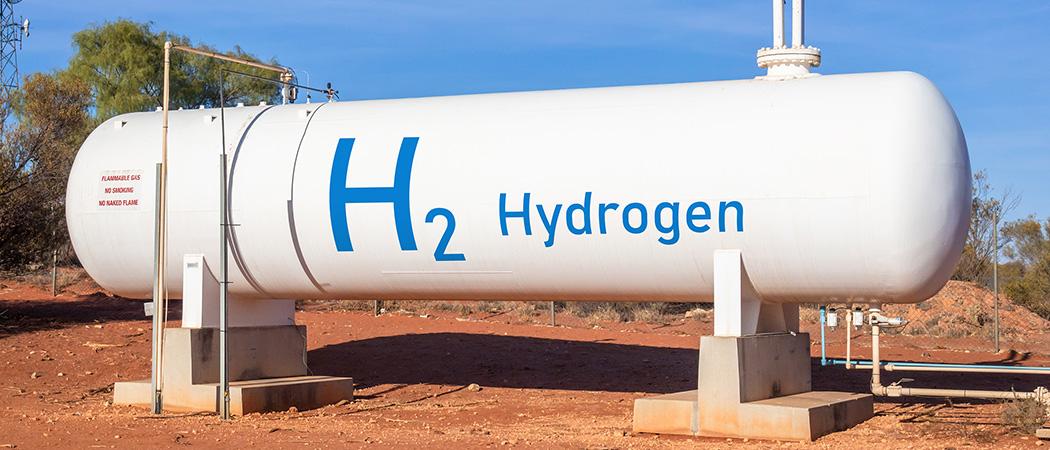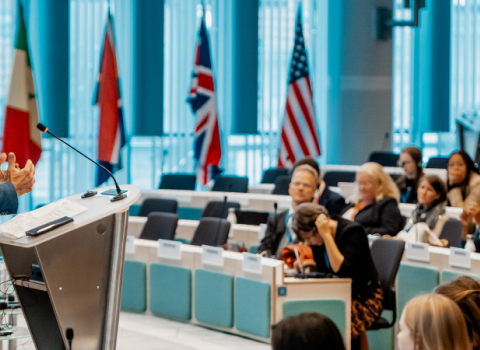The race to the hydrogen economy is on and in the next decade, production should become cheaper and storage and use easier. But not everyone is convinced green hydrogen is the fuel of the future

Clean hydrogen is touted as the future fuel of the EU, promising to deliver an abundance of carbon-neutral energy by 2030. It will power long haul freight vehicles, airplanes, steel production and domestic heating, proponents say. But environmentalists are sceptical about these green virtues.
“We can’t tackle the climate crisis by consuming the same amount of energy and just burning different fuels. Energy savings, changing energy use and electrification of as much heating, transport and industry as possible, should be at the core of our energy plans,” said Silvia Pastorelli, climate and energy campaigner at Greenpeace.
The electrolysers needed to split water to oxygen and hydrogen are few in number, and renewable electricity needed to power them is not yet abundant enough. The European Commission estimates between €180 billion and €470 billion will be needed before green hydrogen can make up 13-14% of the EU energy mix in 2050.
But things are moving fast with new hydrogen demonstration projects launching every day. Countries are drawing up strategies to build green hydrogen markets. Start-ups and researchers are working across the entire hydrogen value chain.
One such start-up, Kubagen, aims to improve hydrogen storage, and its founder and CEO David Antonelli is positive hydrogen is here to stay. “I hear new things every day, but windfarms in Texas now are very close to cost effective relative to diesel, and expected to improve further. We are also working with photovoltaic companies who are installing green hydrogen plants across the EU - a lot is changing very quickly,” Antonelli said.
The grass is always greener
The US has launched a plan to bring down the cost of 1kg of green hydrogen to $1 by 2030, while Germany is teaming up with Australia and Namibia to set up global hydrogen supply chains.
In the last 20 years, almost 450 low-carbon hydrogen demonstration projects were announced, and the list keeps growing, according to the International Energy Agency’s database.
However, technologies for producing green hydrogen are as yet nascent and the whole process is expensive. Today, green hydrogen cannot compete with other energy sources, or with grey hydrogen produced from fossil fuels.
In many national strategies an interim step is envisaged of using methane to generate hydrogen, but capturing the carbon, producing so called blue hydrogen. This is seen as a cleaner alternative to its grey counterpart and a way of developing applications and helping to build hydrogen markets.
While technically, carbon emissions are captured, a recent study from scientists at Cornell and Stanford universities says blue hydrogen may be up to 20% worse for the environment than directly burning methane. “The carbon capture and storage technology used in the production of this fossil hydrogen is extremely expensive and so far unproven on the scale that would be required,” said Pastorelli.
There are disagreements in industry. In August, Chris Jackson, chair of the UK Hydrogen and Fuel Cell Association, a leading industry group, quit a day before the country revealed its hydrogen strategy, citing concerns with the plan’s reliance on blue hydrogen, which he called “an expensive distraction”. Jackson, who is CEO sustainable energy specialist Protium, was only elected to the chair at the end of June.
Promoters of blue hydrogen say it is not the long term answer, but rather a stepping stone. Green hydrogen is the end goal and the part played by blue hydrogen depends very much on the ability of industry to deliver, said Jorgo Chatzimarkakis, CEO of Hydrogen Europe, the EU’s largest hydrogen association. “If ever, blue hydrogen should only be used in a transitional period in order to make other technologies applicable like in mobility. However, there should be a high decarbonization rate of 90% mandatory.”
Old product, old problems
This is not the first time hydrogen has been hailed as the fuel of the future. It powered the first internal combustion engine in 1806. In 1970, the term hydrogen economy was coined after a report by a US academic Lawrence Jones started hydrogen hype in the country, which eventually died down in the 1980s.
Today, hydrogen produced from fossil fuels, without capturing the carbon, is used mainly in the chemicals and refining industries. It is responsible to 830 million tonnes of CO2 emissions per year, equivalent to the annual emissions of the UK and Indonesia combined.
While green hydrogen will avoid this pollution, many old problems remain, most notably how to store it safely. While less toxic and more readily dispersed than natural gas, hydrogen has a wide range of flammable concentrations in air and lower ignition energy than petrol or natural gas, which means it can ignite more easily.
Currently, hydrogen storage requires extremely high pressure and is therefore too expensive and inefficient for widespread use in vehicles.
Kubagen is working with novel base-metal compounds, which are cheap and easy to synthesise, to enable hydrogen to be stored at room temperature and moderate pressures. The company says its materials can store four times more hydrogen in the same space than current systems, at 25% of the cost.
“This means we can get four times the range at lower cost than current 700 bar storage, opening the doorway to long haul vehicle applications. So, our material is clearly a game changer, especially for long haul vehicles where lithium batteries are impractical and current 700 bar falls short of demands, that is, the tank would be too big on a truck to be practical,” said Antonelli.
Despite such advances, green groups remain sceptical about the overall potential of hydrogen, calling it a dangerous distraction from better alternatives, such as direct electrification. “Hydrogen is no silver bullet, and will continue to be a scarce resource, renewable hydrogen especially. Because hydrogen is not a primary source of energy, but a carrier, and because of large conversion losses, renewable hydrogen is less efficient than direct electrification and remodelling of heating and transport, which should remain the priority,” said Pastorelli. “Renewable hydrogen should be targeted at industrial processes where decarbonisation is harder to achieve, like steel production.”
Clarity leads to action
The EU hydrogen strategy set it on the road to a hydrogen economy in 2020. Since then, the European Commission has been coordinating investments with industry through the Clean Hydrogen Alliance. There’s also a framework enabling cross-border hydrogen projects with the help of more relaxed state-aid rules.
The Commission has been co-investing in hydrogen with industry since 2008 when it launched the first hydrogen public-private partnership. The latest version of the initiative, now fully focused on the green version of the gas, is set to launch in the coming months when the EU member states give their approval to the partnership.
Industry has welcomed Commission’s plans but is holding out for clearer market rules to drive demand. “First and foremost, the main bottleneck is the lack of a clear and coherent legislative framework governing the hydrogen market and infrastructure-related aspects and incentives,” said Chatzimarkakis.
Once the legislation is simplified and sufficient demand is generated, hydrogen production can be scaled up, including the green version of the gas, says Chatzimarkakis. With sufficient demand and increased production capacity, prices will fall, making hydrogen competitive with currently dominant, polluting, forms of energy. This shift is contingent on the cost of renewable energy decreasing and the carbon cost increasing.
The three conditions of the right market environment, supportive policy and increased production capacity, can “ensure competitiveness, and given current expectations, most applications should be cost competitive with their fossil alternatives by 2030,” Chatzimarkakis said.
Global race
The UK recently announced plans to attract £4 billion investment to launch a country-wide hydrogen economy, while the US is upping funding to bring down clean hydrogen costs by 80% in the coming decade. Meanwhile, China’s new five-year plan sees hydrogen becoming one of the country’s six industries of the future.
For Europe, this means the race is on. Chatzimarkakis says it is essential for the EU to retain its leadership in areas such as electrolysis technologies and hydrogen refuelling stations. In areas where others have the lead, such as fuel cells, its vital to keep up with the competition.
The goal should be to avoid repeating the story of solar energy, when following a strong start in Europe, China became the world’s largest manufacturers of and market for photovoltaics, said Chatzimarkakis.
For environmental groups, there is a different issue, which is avoiding energy systems around the world becoming reliant on blue hydrogen. “The next few years are crucial for the climate: if we delay, or worse, lock ourselves into yet another toxic system, we will lose our chance to avoid the worst impacts of climate breakdown,” said Pastorelli.





 A unique international forum for public research organisations and companies to connect their external engagement with strategic interests around their R&D system.
A unique international forum for public research organisations and companies to connect their external engagement with strategic interests around their R&D system.